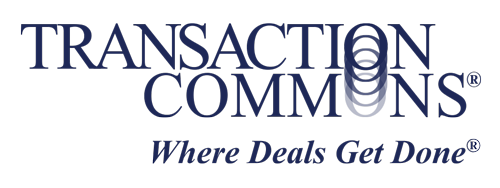One-Sided Solutions Don’t Make Transactions More Efficient

Technology has brought many benefits to business relationships and transactions. The ability to share documents electronically has improved the efficiency of document collaboration within a team. But that efficiency may evaporate when multiple (often “opposing”) parties are involved.
Technology-based collaboration tools are almost always implemented with one party in control. Examples would be a seller in a merger or acquisition transaction who has selected a particular virtual data room or a customer who has sent an agreement to a supplier for signature using their chosen e-signature platform. In a negotiated transaction draft documents might be circulated for revision using a file sharing platform, but that platform effectively “belongs” to one party – and that controlling party can share or un-share, and often revise or remove, documents that have been posted. This approach only works when the other party (let’s call them the “subservient party” – which is somewhat negative, but true) is willing to accept the control exerted by the other party.
In transactions where a little complexity arises, or where the subservient party becomes uncomfortable in that position, the default “solution” is to back away from the controlled platform and resort to email. When there are changes to a document previously distributed for e-signature and those changes are made outside of that e-signature platform – say in Microsoft Word – that revised document is probably circulated by email. Once email is in the equation it is hard to remove it (and from a draft review standpoint, you can probably never remove it anyway). Even if, for example, a revised document is re-sent for e-signature, the “source documents” for confirming whether the requested changes have been made are probably in emails (and/or on one party’s internal document management system).
In the end, the transaction document process ends up being spread across multiple email inboxes, file sharing applications and document repositories. Add additional parties to the transaction – lenders, title companies, etc. – and the potential for disorganization and waste (at best) or errors (at worst) become apparent.
It is not realistic or fair to expect all transaction participants to agree on a comprehensive solution where the parties do not have equal access and control, which would include the ability to monitor user activity and post documents and the assurance that posted documents will not change or disappear. Even with shared control, it is unrealistic to expect a party that has deployed an all-encompassing solution to re-learn a new solution insisted on by the other party for a specific transaction.
Also consider the role of advisors – deal brokers, investment bankers, realtors, lawyers, accountants, and others – and whether they are (or should be) comfortable with being on the “subservient party” side of the transaction platform. As advocates and/or fiduciaries for their clients, is using a one-sided transaction platform optically or ethically acceptable?
So what will make transactions more efficient?
- Do not use email to exchange transaction documents. Between the potential security issues and the inherent disorganization of email, using a better platform is the first and most important step toward an efficient transaction.
- Use a document exchange solution that can be controlled equally by all parties to the transaction.
- Make sure the solution is simple and intuitive to use. The platform should not require any software downloads and it should be able to accept documents in standard file formats.
- Use a solution that preserves the transaction history and integrity of the documents. The platform should not allow any party to edit documents once they have been posted.
- Agree up front on an organization structure to use. While the parties might differ on specifics, for example whose due diligence checklist to use, in most cases there is no real squabble over the document categories (folder structure) that make sense for the transaction. A suitable folder structure – with “ownership” shared by both parties – could be settled on quickly, especially with a good starting point from the solution provider (perhaps already incorporated in the platform).
Transaction Commons is the solution to making your transactions more efficient. Learn more.
